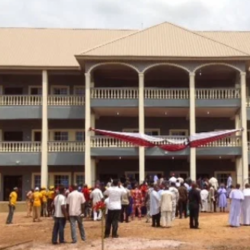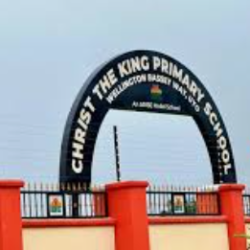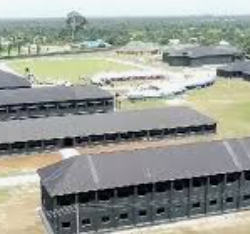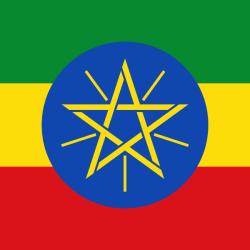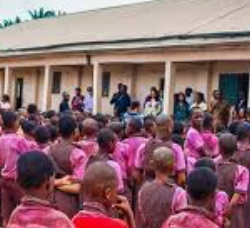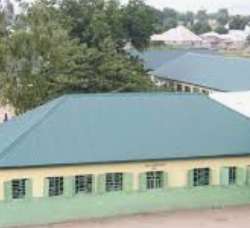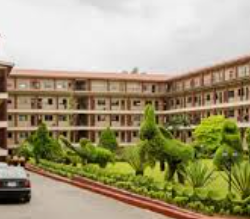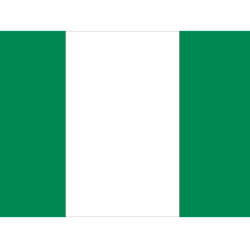Nigeria’s President Bola Tinubu inaugurated a high-level committee on the forthcoming National Population and Housing Census on Wednesday 16 April, 2025. The committee is to submit an interim report within three weeks.
The President said the census is crucial for national development, accurate planning, and effective decision-making in healthcare, education, security, and economic planning.
Key Directives from Tinubu
- Technology-Driven Process: The census must be digitally conducted using biometrics and modern tech for credible results.
- Funding Strategy: The committee should explore domestic and international financing options for the exercise.
- Inter-Agency Collaboration: The Ministry of Budget and Economic Planning will lead coordination with other agencies.
Committee’s Response
- Chairman’s Assurance: Senator Atiku Bagudu (Minister of Budget) pledged to meet the three-week deadline and align with Tinubu’s vision for cost-effective, innovative solutions.
- NPC’s Readiness: The National Population Commission (NPC) confirmed preparations are ongoing for a credible, tech-driven census.
Committee Members
- Includes the Finance Minister, FIRS Chairman, NIMC DG, Information Minister, and other senior officials.

Why It Matters
A new census will provide updated data critical for policy-making, resource allocation, and economic planning, addressing gaps from the 18-year-old 2006 data.
This move signals the Tinubu administration’s push for data-driven governance amid Nigeria’s economic and security challenges.
implications, challenges, and potential impacts of Nigeria’s upcoming national census under President Tinubu’s administration:
1. Why This Census Matters Now
- Outdated Data: Nigeria’s last census (2006) recorded 140 million people, but estimates now exceed 220 million, making planning unreliable.
- Economic & Social Planning: Accurate data is critical for:
- Resource allocation (e.g., revenue sharing, school/hospital placements).
- Security strategies (e.g., policing, conflict resolution based on population density).
- Foreign investment decisions (investors rely on demographic data).
- SDGs & Global Commitments: Nigeria needs updated stats to track progress on UN Sustainable Development Goals (SDGs).
2. Key Challenges Ahead
A. Funding Constraints
- Tinubu urged alternative financing (international donors, private sector), but Nigeria’s economic crisis (high debt, inflation) may limit budget flexibility.
- Past attempts (e.g., 2023 postponed census) faced funding shortages.
B. Logistical & Security Hurdles
- Insecurity: Banditry, kidnappings, and separatist unrest (e.g., Southeast, Northwest) could disrupt fieldwork.
- Tech Risks: Biometric/digital systems may fail in rural areas with poor connectivity.
C. Political Controversies
- Manipulation Fears: Past censuses were disputed (e.g., 2006 counts excluded religion/ethnicity to avoid tensions).
- Regional Rivalry: States may inflate numbers to gain more federal funds, legislative seats.
D. Public Trust & Compliance
- Low Awareness: Many Nigerians may not participate due to distrust in government or fear of taxation, displacement.
- NIN-SIM Linkage Issues: If tied to National Identity Number (NIN), millions could be excluded due to registration gaps.
3. Opportunities for Success
- Technology Advantage: Digital mapping, GPS, and biometrics can reduce fraud (unlike manual 2006 methods).
- Youth Demographic Dividend: Involving tech-savvy enumerators could improve efficiency.
- Global Partnerships: World Bank, UN, and NGOs may provide technical/financial support.
4. What Happens Next?
- 3-Week Deadline: The committee’s interim report will shape timeline, budget, and methodology.
- Possible Timeline: If approved, the census could occur in late 2025 or 2026.
- Post-Census Impact: Data will influence 2027 revenue formula, 2030 development plans, and political representation.
5. Comparative Lessons
- Ghana (2021 Census): Successfully used tablet-based data collection but faced funding gaps.
- Kenya (2019): Controversy over ethnic numbers led to legal disputes.
- India (2024): Introducing AI-driven analytics—could Nigeria adopt similar tech?
Past national censuses conducted in Nigeria, along with key details about each exercise
1. 1866 Census (Colonial Era)
- Conducted by: British colonial government
- Coverage: Limited to Lagos Colony
- Recorded Population: Unknown (data largely incomplete)
- Notes: First known attempt at counting Nigeria’s population.
2. 1871 Census
- Coverage: Expanded to Lagos and nearby areas
- Recorded Population: ~ 28,000 (Lagos only)
- Notes: Still restricted to coastal regions under British control.
3. 1881 Census
- Coverage: Lagos, Badagry, and parts of Yorubaland
- Recorded Population: ~ 37,000 (Lagos)
- Notes: Remained limited due to resistance in hinterlands.
4. 1891 Census
- Coverage: Extended to southern protectorate
- Recorded Population: ~ 2 million (estimated)
- Notes: First wider count but still excluded the North.
5. 1901 Census
- Coverage: Southern Nigeria & partial Northern regions
- Recorded Population: ~ 4 million (estimate)
- Notes: Conducted after the Royal Niger Company handed control to the British Crown.
6. 1911 Census
- Coverage: First nationwide attempt (North & South)
- Recorded Population: 16 million (estimate)
- Notes: Data unreliable due to logistical challenges.
7. 1921 Census
- Coverage: Full British Nigeria
- Recorded Population: 18.7 million
- Notes: First relatively comprehensive count but still undercounted rural areas.
8. 1931 Census
- Coverage: Nationwide
- Recorded Population: 20.1 million
- Notes: Improved methodology but still excluded nomadic populations.
9. 1952/53 Census (First Modern Census)
- Coverage: Pre-independence Nigeria
- Recorded Population: 31.6 million
- Notes:
- First census with detailed demographic data.
- Results sparked disputes between North and South over regional population shares.
10. 1962 Census (Post-Independence)
- Coverage: Independent Nigeria (1960)
- Recorded Population: 45.26 million
- Notes:
- Results canceled due to widespread fraud and political tensions.
11. 1963 Census (Replacement for 1962)
- Coverage: Nationwide
- Recorded Population: 55.67 million
- Notes:
- Controversial—Northern region’s numbers were heavily questioned.
- Remained Nigeria’s official data until 1991.
12. 1973 Census (Post-Civil War Attempt)
- Coverage: Post-Biafra War Nigeria
- Recorded Population: 79.8 million (preliminary)
- Notes:
- Results annulled by Gen. Gowon due to manipulation claims.
- Left Nigeria without official data for 18 years.
13. 1991 Census (First in 18 Years)
- Coverage: Nationwide
- Recorded Population: 88.99 million
- Notes:
- First computer-assisted census.
- Generally accepted as more credible than past counts.
14. 2006 Census (Most Recent Official Census)
- Coverage: Full Nigeria
- Recorded Population: 140.43 million
- Males: 71.3 million
- Females: 69.1 million
- Notes:
- First to include housing data.
- No ethnic/religious figures (to avoid tensions).
- Still in use today, though criticized for undercounting.
Failed/Postponed Attempts
- 2016: Planned census was suspended due to funding issues.
- 2023: Census postponed indefinitely under President Buhari over financial and security concerns.
Key Observations
- Colonial censuses were localized and unreliable.
- Post-independence censuses plagued by political disputes.
- 2006 census remains the last accepted count—now 18 years outdated.
- 2024/25 census (if held) will be the first digital, biometric-driven exercise.

